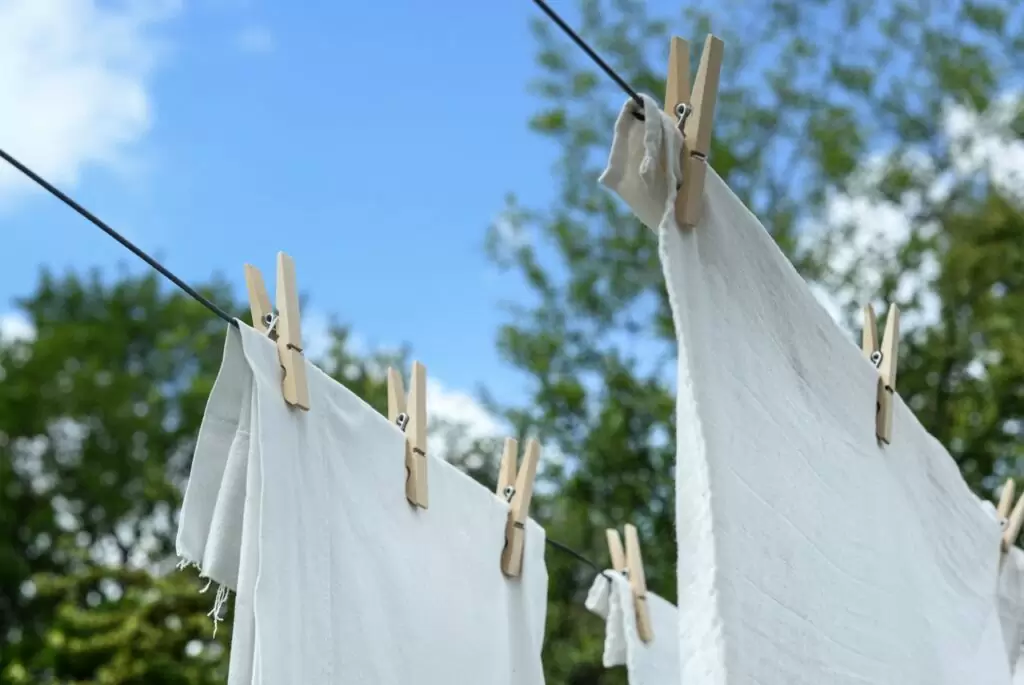
When it comes to drying your clothes efficiently, a washing line pulley system turns laundry into a smart, space-saving, and eco-friendly household chore.
Whether you have limited outdoor space or want to reduce your reliance on energy-consuming tumble dryers, this system provides a practical solution.
In this guide, we’ll explore how a washing line pulley system works, the benefits of a pulley system for clothes drying, and the key factors to keep in mind before making a purchase.
Keep reading, and before you know it, you’ll be doing laundry like a pro!
What is a washing line pulley system?
A washing line pulley system is a type of outdoor or indoor laundry drying setup that allows clothes to be hung and retrieved without moving from a single position.
Considered one of the best washing lines, the system consists of a continuous loop of pulley line – made from rope or cord – running through pulleys, which enables the user to pull the washing line along as they hang or remove laundry.
How does a washing line pulley system work?
Pulley system is anchored between two fixed points, such as a house and a pole outside, or two walls inside. By pulling on one side of the line, the clothes move along the pulley system, allowing additional clothing to be added without walking back and forth. Once the clothes are dry, the same process is used to retrieve them.
7 reasons you should invest in a pulley system for clothes drying
1. Space-saving design
Washing line pulley systems are ideal for small homes or flats, balconies, and compact laundry rooms. They can be ceiling-mounted, with a ceiling airer to place the clothes onto, to maximise vertical space (more so for an indoor pulley washing line system, or in a covered area outside), or attached horizontally.
2. Convenience and ease of use
Pulley systems remove the need to manually carry heavy, wet laundry. Instead, you can stand in one place to raise, lower and move clothes along the line.
3. Better air circulation and faster drying
The elevated position of a washing line pulley system allows for better airflow to get to your laundry, reducing drying time. Some people also claim that clothes dry more evenly, compared to traditional washing lines.
4. Protects clothes from dust and dirt
The higher elevation of a pulley system also minimises your laundry’s exposure to ground-level dirt and pet hair. It can also be positioned away from things that could cause potential stains and splashes.
5. Energy efficiency and cost savings
Want to dry clothes without a tumble dryer? Pulley line systems reduce your reliance on electric tumble dryers, saving energy and lowering electricity bills. They are an environmentally friendly alternative, with zero carbon footprint.
6. Durability and longevity
High quality washing line pulley systems are designed to withstand heavy loads and long-term use. They also require minimal maintenance to keep them in best condition, meaning they can last for years.
7. Ideal for all weather conditions
These systems are perfect for indoor and outdoor use. Outdoor pulley lines are designed to withstand harsh weather, and indoor models ensure your laundry dries evenly, in rainy or cold seasons.
Factors to consider before purchasing a washing line pulley system
Before purchasing a washing line pulley system, consider the following factors to ensure it meets your needs:
1. Space and location
Do you have the right area to put your system in?
Measure the distance between the two anchor points, and ensure there is enough clearance for your clothes to move freely without obstruction.If outside, consider whether the area receives adequate sunlight and airflow for efficient drying.
2. Material and durability
Washing line pulley systems are made with three crucial components: pulleys, rope, and mounting hardware.
For the pulleys – a wheel with a groove around its edge – look for rust-resistant materials like stainless steel or weatherproof plastic. Pulley ropes or cords should be strong, UV resistant and weatherproof, especially if used outdoors – these can be natural or plastic washing lines. You’ll also want to ensure that your mounting hardware, such as brackets and fasteners, are sturdy and corrosion resistant.
3. Load Capacity
How much washing do you get through in one load?
Consider the weight of the laundry you typically hang. Opt for a heavy-duty system if you frequently dry large loads, bedding, or heavy clothing.
4. Adjustability and ease of use
Washing line pulley systems are made to make laundry drying easier, so consider upgrading for additional ease of use.
If you want your washing line pulley system to last, a clothesline tightener or tensioning system can help keep your washing line tight and prevent sagging. For more smoother movement, a dual-pulley system offers smoother movement compared to a single-pulley setup.
5. Installation requirements
Can you install a washing line pulley system in your chosen area?
Check if installation requires drilling or additional supports. Some systems come with wall-mounted brackets, whilst others may need a separate post or pole.
6. Weather resistance
Are you opting for an outdoor or indoor washing line pulley system?
If installed outdoors, you need to ensure all components can withstand rain, wind, and sun exposure. A retractable or removable system may be ideal for areas with extreme weather conditions.
7. Price and budget
Is your ideal washing line pulley system within your budget?
Compare prices based on quality, brand, and additional features.Higher-end pulley systems may include weatherproof coatings, self-locking mechanisms, or extra tensioners for better performance.
When it comes to drying laundry, we truly know our stuff. In fact, James Lever pioneered the introduction of PVC washing lines to the UK in the 1960s, and our Everlasto range has been the leading brand ever since.
Want to learn more about our products? Get in touch with our friendly team or check out additional resources on our blog.
